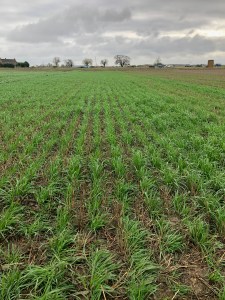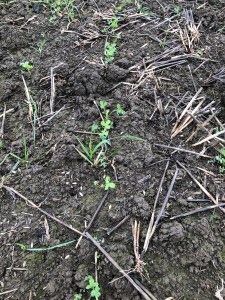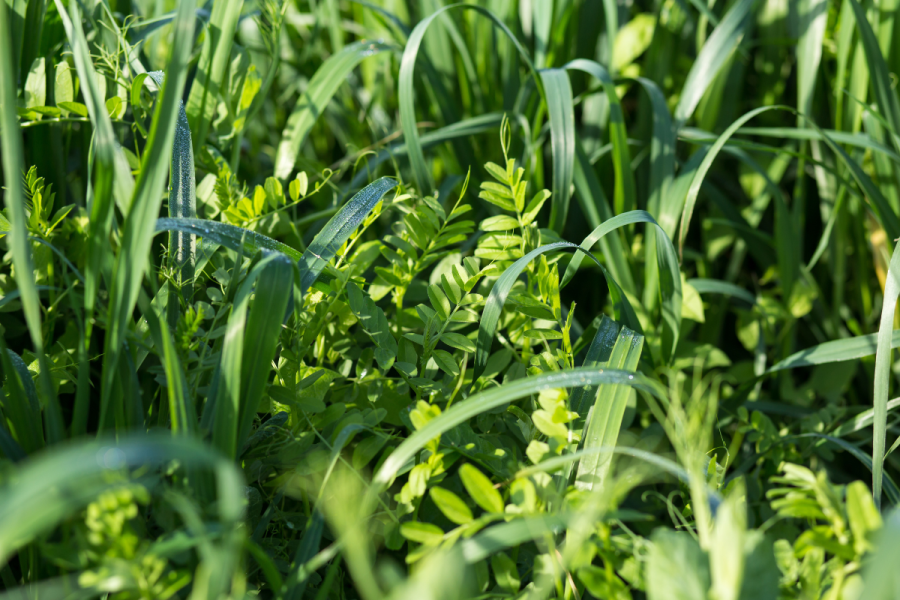How is Dyson Farming transitioning to its stated aim of a long term, regenerative model that leaves a positive land legacy? CPM listens as Tom Storr explains the company’s strategy at the recent BASE-UK conference.
“We’re looking for species that grow quickly and are quite reliably robust in establishing.”
By Mike Abram
Pretty much like many other farming businesses across the country, improving soil health has become a key focus for Dyson Farming. But not many will be trying to do it on such a large scale or across such a wide range of soil types.
Dyson Farming covers around 14,000ha across sites in Lincolnshire, Oxfordshire and Gloucestershire. At Nocton in Lincolnshire, there are soils with 55% clay content and those with 30% organic matter content on riverbanks and calcareous heathland, explains Dyson farming research agronomist Tom Storr.

Tom Storr explains that across the farms, Dyson Farming can’t deploy all regenerative principles everywhere, but it tries to use as many as possible.
The farm at Carrington has even more challenging soils with high magnesium silty clays and silty loams on Holbeach Marsh. While in Oxfordshire, soils are shallow and easy to work, allowing the farm manager to implement a controlled traffic farming system.
“Again, in Gloucestershire there’s a range from heavy to sandy soils, with most in between,” adds Tom.
The business is not doing anything particularly revolutionary to improve soil health – it follows the five principles of regenerative agriculture that most farmers will be familiar with and perhaps an increased emphasis on using the latest technology compared with some farms.
“Farmers will recognise most of the different things we do,” says Tom. “And across the farms we can’t employ everything everywhere, but we try to use as many as we can.”
Cropping is kept as diverse as possible, although there is no set rotation across the farm. In Lincolnshire, 45% of cropping is winter wheat and oilseed rape, interspersed with forage maize for Dyson Farming’s anaerobic digestion plant, as well as various other crops.
A 12ha agroforestry field, with 36m cropping lanes between apple tree alleys, was planted last autumn on land that wasn’t performing particularly well. “The idea is to improve the way we manage that land through agroforestry.”
In Gloucestershire the farm grows winter beans, which isn’t common practice on the other farms. “But we’re increasingly looking at how we increase legumes within our rotation.”
However, the real challenge for implementing regen practices and soil health is the 200ha of potatoes, as well as sugar beet grown in Lincolnshire, says Tom. While a small trial growing potatoes with zero tillage by covering the tubers with straw proved possible within reason, yields were only a third of the conventional practice. Getting the straw through the potato harvester was difficult in year two so the main focus has been on reducing cultivations.
“Typically we’ve quite an intensive potato preparation. A field might be ploughed and cover cropped, and then cultivated with something like a Simba SLD, before bed-forming, one or two bed-tiller passes, and possibly a shallow set of tines run through the bed.
“That’s all done to help manage the potato quality and make harvesting easier by managing soil aggregate sizes in the autumn.”
But research is showing there’s little difference in soil aggregate size or yield when comparing one or two passes of the bed-tiller and the standard approach. “This is helping us think about where we can reduce cultivations within the rotation and integrating potatoes into a regenerative approach.”
The business as a whole is still using a decent amount of quite high disturbance cultivation, albeit it’s reducing, especially ploughing, in the past few years, says Tom. “We’re still using the SLD quite extensively across the farms, so it’s work in progress in reducing cultivations and is perhaps one of the hardest of the key practices for Dyson Farming to implement.”
Chopping straw is helping to reduce soil erosion, with the heavy downpours during last summer in Lincolnshire proving that when straw is removed, it leaves soils exposed – closing soil pores and creating more capping – as well as increasing erosion risk.
“Where the straw was retained, you could see a huge difference in porosity, with the straw on the surface aiding both infiltration and water retention, preventing runoff from the field.”
Under sowing maize with grass is being used to protect the soil surface. It has worked well in Gloucestershire, providing grazing the following spring for sheep, but much less effectively in Lincolnshire. Here, finding a method that can get around the large maize area successfully has proved problematic, with aircasting into the standing crop just wasting seed. The focus has changed to harvesting maize early and establishing wheat in better conditions, explains Tom.
Reducing the amount of maize grown for AD is another potential solution, he suggests, replacing it with a summer forage. Initially, a mix of hybrid rye and vetch was tried but volunteer rye in following crops proved an issue, while triticale didn’t provide a take-all break in the rotation.
“So we moved to oats and vetch and we’re now growing 300ha to replace some of the maize,” says Tom. “It has a number of benefits, including increased biodiversity and putting an additional legume into the rotation.”

At Dyson Farms, cereal species, such as Mascani oats, are found to establish better under no-till than where cultivation is used.
It also helps provide a window for a catch crop following the forage crops, as well as after vining peas, he says. These, along with cover crops, play an important role in helping to retain soil nutrients, while building soil biology by keeping a living root in the soil for as long as possible during the year.
Analysis of field with and without catch crops has shown that growing catch crops seems to increase yields of the following cash crop on lighter soils, but reduce it on heavier soil types, says Tom.
Like many farms, there’s also been some teething problems while learning how to integrate them into the wider system, he explains. For example, how to drill into very high biomass phacelia and buckwheat catch crop with the farm’s Väderstad drills.
“It proved too much. We did consider spraying it off, but there’s the public image to consider of spraying off a flowering crop. There’s also the ecological impact of providing this habitat and then taking it away either by spraying or flailing.”
Other catch crops have had the opposite problem, with seed rates too low and a corresponding impact on soil coverage.
To learn a bit more about cover crops, Dyson Farming has been working with Anglian Water and Boston Seeds. “We’ve planted about 19 different species of cover crops both by direct drill and following cultivation.
“For cereal species we’ve generally had much better establishment using no-till, where the moisture was conserved. Using a soil moisture probe showed there was about an extra 10% volumetric soil moisture in those soils compared with cultivation, highlighting the ability of no-till to conserve soil moisture in what was a challenging cover crop season last autumn.”
Seed-to-soil contact seemed important for the clover species – they only established where the drill tyres had run, giving better consolidation in the dry conditions. “Getting clover established has been a challenge as the method of establishment across the business tends to be broadcast, so we don’t have the capacity to go and roll behind.

Clover species have struggled to establish in the cover crop trial except where drill tyres had created better seed to soil contact.
“We’re looking for species that grow quickly and are quite reliably robust in establishing.”
Selected plots in the trial will also be monitored every month for soil mineral nitrogen to see how it changes over time, adds Tom. “We’re expecting that where a cover crop species has senesced overwinter, we’ll see an increase in soil mineral nitrogen. Where the plot is fallow, we’ll probably see that nitrogen doesn’t return as it will be likely to move through the soil profile.
“And then where there’s a cover crop still living, we’d expect the soil mineral nitrogen to stay relatively low until after we terminate the cover crop.”
On the final core principle of regenerative agriculture – livestock integration – there’s a range of experiences across the business, depending on the equipment available in each location, says Tom.
Sheep numbers are increasing across the business, with over 20% of cover crops grazed at the Nocton, Oxfordshire and Gloucestershire farms. “At Carrington it’s much less because we struggle with the infrastructure and also the different soil types, which we might poach.”
There’s also been an increase in planted herbal leys, which are typically down for three to five years. “We need to learn how best to bring those back into the arable rotation,” he concludes.
This article was taken from the latest issue of CPM. Read the article in full here.
For more articles like this, subscribe here.
Sign up for Crop Production Magazine’s FREE e-newsletter here.




